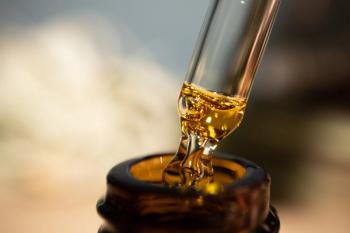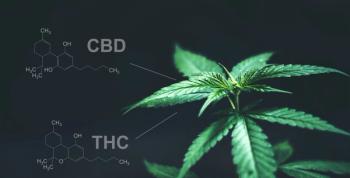
Phenolic Analysis of Cannabis Reveals Rare Flavoalkaloids in Leaves
Key Takeaways
- Flavoalkaloids, rare in nature, were detected in cannabis leaves, highlighting the plant's complex phenolic profile.
- Researchers identified 79 compounds, including 25 phenolics not previously reported in cannabis, using advanced chromatographic techniques.
Using an optimized analytical method for this research, the phenolics of cannabis were tested resulting in new findings.
The researchers from Department of Chemistry and Polymer Science at Stellenbosch University (SU) in South Africa used three commercial strains (named Cape Cookie, CBG, and Blue Sky) of cannabis inflorescence and leaf samples. For the separation and analysis of the flavonoids, a hydrophilic interaction chromatography (HILIC) × reversed-phase liquid chromatography (RP-LC) method, an in-house developed program, was used. Two-dimensional liquid chromatography (LC × LC) was used to analyze the phenolic mixtures.
Highlighted results of the study include:
- 79 compounds were tentatively identified and were mostly comprised of flavone and (hydroxy)cinnamic acid derivatives
- 25 phenolic compounds were reported for the first time in cannabis
- In one strain, flavoalkaloids were detected in the leaf extracts, though there was not enough data to assign the alkaloid moieties
“Most plants contain highly complex mixtures of phenolic compounds, and while flavonoids occur widely in the plant kingdom, the flavoalkaloids are very rare in nature," stated study author Magriet Muller, PhD, in an August 14
Dr. Muller also explained that she had initially tested the new analytical method on rooibos tea, grapes, and wine before applying it to cannabis.
The results support the use of HILIC and RP-LC-HR-MS for studying the phenolics of cannabis, the researchers stated. More research is needed for revealing the structures and prevalence of the compounds.
“Our analysis again highlights the medicinal potential of Cannabis plant material, currently regarded as waste,” explained André de Villiers, study author and professor at SU. “Cannabis exhibits a rich and unique non-cannabinoid phenolic profile, which could be relevant from a biomedical research perspective.” de Villiers also explained how the two-dimensional LC was crucial in the separation of the flavoalkaloids and flavonoids.
References
- Muller, M.; de Villiers, A. Comprehensive two-dimensional liquid chromatographic analysis of Cannabis phenolics and first evidence of flavoalkaloids in Cannabis, Journal of Chromatography A, 2025, 1754, DOI:
10.1016/j.chroma.2025.466023 . - Fourie-Basson, W. Don’t throw away those Cannabis leaves – they are packed with rare compounds
https://www.sun.ac.za/english/Lists/news/DispForm.aspx?ID=11490 (accessed Aug 26, 2025).
Newsletter
Unlock the latest breakthroughs in cannabis science—subscribe now to get expert insights, research, and industry updates delivered to your inbox.





